Alaska, the largest state in the United States, is a land of breathtaking natural beauty. Located in the far northwestern corner of North America, Alaska is famous for its extensive size, with an area of approximately 663,300 square miles (1,717,856 square kilometers). California, Montana, and Texas combined — the three largest states after Alaska — would still not match Alaska’s size.
The state is home to various and diverse landscapes, ranging from mountain ranges and icy glaciers to forests and stunning coastlines, making it a haven for outdoor enthusiasts and nature lovers. Alaska also has a rich history, deeply rooted indigenous cultures, and thriving wildlife.
Where Is Alaska Located on the Map?
Alaska is in the northwestern part of North America. It is west of Canada’s Yukon and British Columbia provinces and shares no borders with the contiguous United States. Alaska’s borders are mainly shared with bodies of water. The Bering Sea borders Alaska to the west, the Arctic Ocean to the north, and the Pacific Ocean to the south and southwest.
Alaska’s location at the end of North America and near Asia gives it a unique global position.
When Did Alaska Join the United States?
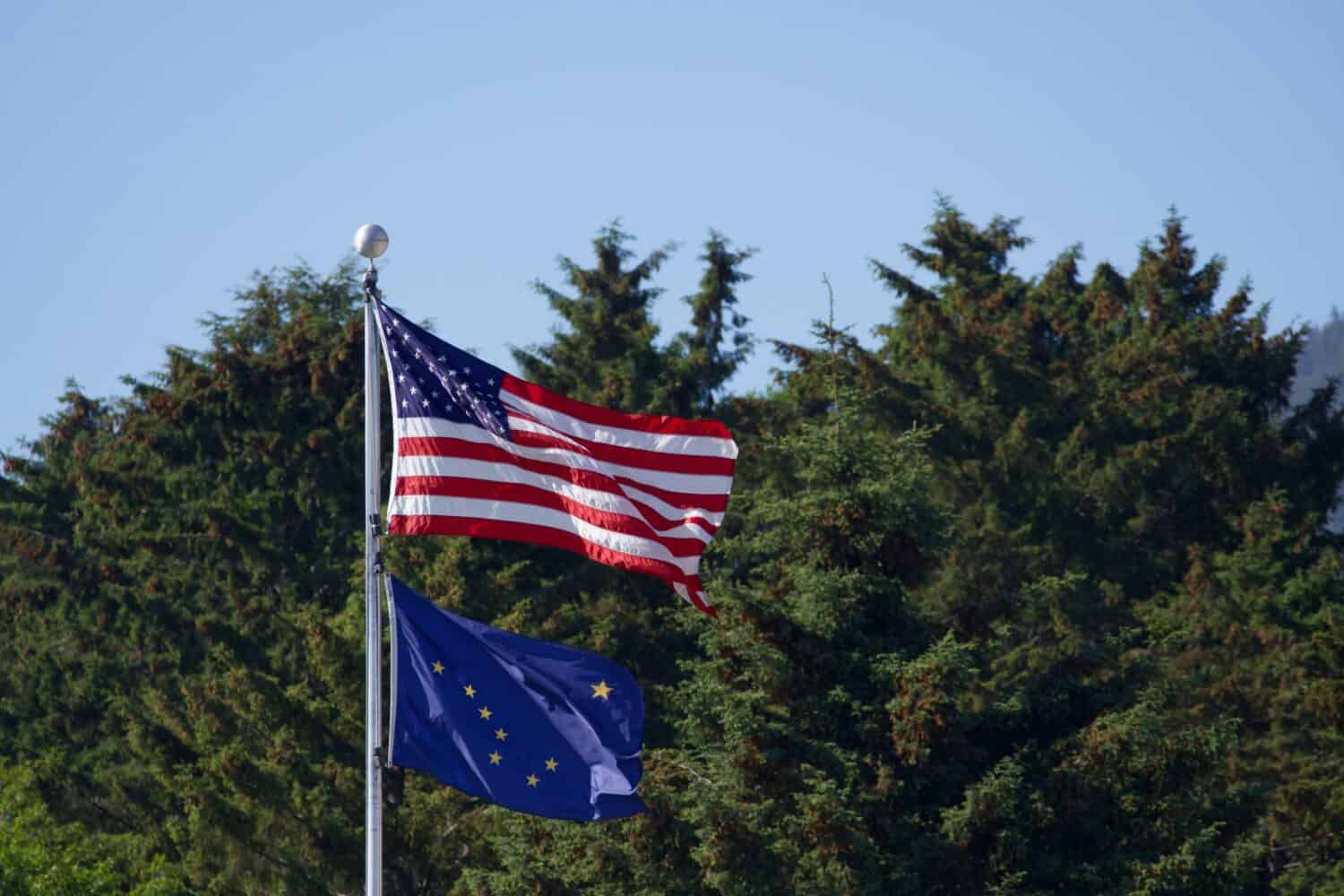
Alaska is the 49th state to become part of the United States.
©iampaese/Shutterstock.com
Alaska was purchased from Russia in the “Alaska Purchase” transaction on March 30, 1867, under President Andrew Johnson. William H. Seward, the Secretary of State, strongly advocated for Alaska’s purchase. The price for the acquisition was $7.2 million, which was approximately two cents per acre for the vast territory. The purchase was ratified on May 15, 1867, and effective on October 18, 1867.
In the United States, Alaska’s acquisition was welcomed with mixed reactions. Various people criticized the purchase as useless and wasteful, nicknaming it “Seward’s Folly” or “Seward’s Icebox,”. They believed the remote and huge land had little to offer; however, Seward saw Alaska’s long-term strategic and economic potential. He believed it could become an essential source of natural resources, such as timber, minerals, and fisheries. But also that Alaska could serve as a gateway to the Pacific and become a crucial location to start a lucrative trade with Asia.
Over time, Seward’s vision proved to be correct. Alaska’s extensive resources, including gold, timber, oil, and other minerals, contributed significantly to the U.S. economy. In the late 19th century, the discovery of gold boasted migration to the region. It led to the development of large cities like Anchorage and Juneau.
On January 9, 1959, Alaska became the 49th state of the United States. Since its integration, Alaska has been a vital part of the country.
What Countries Borders Alaska?
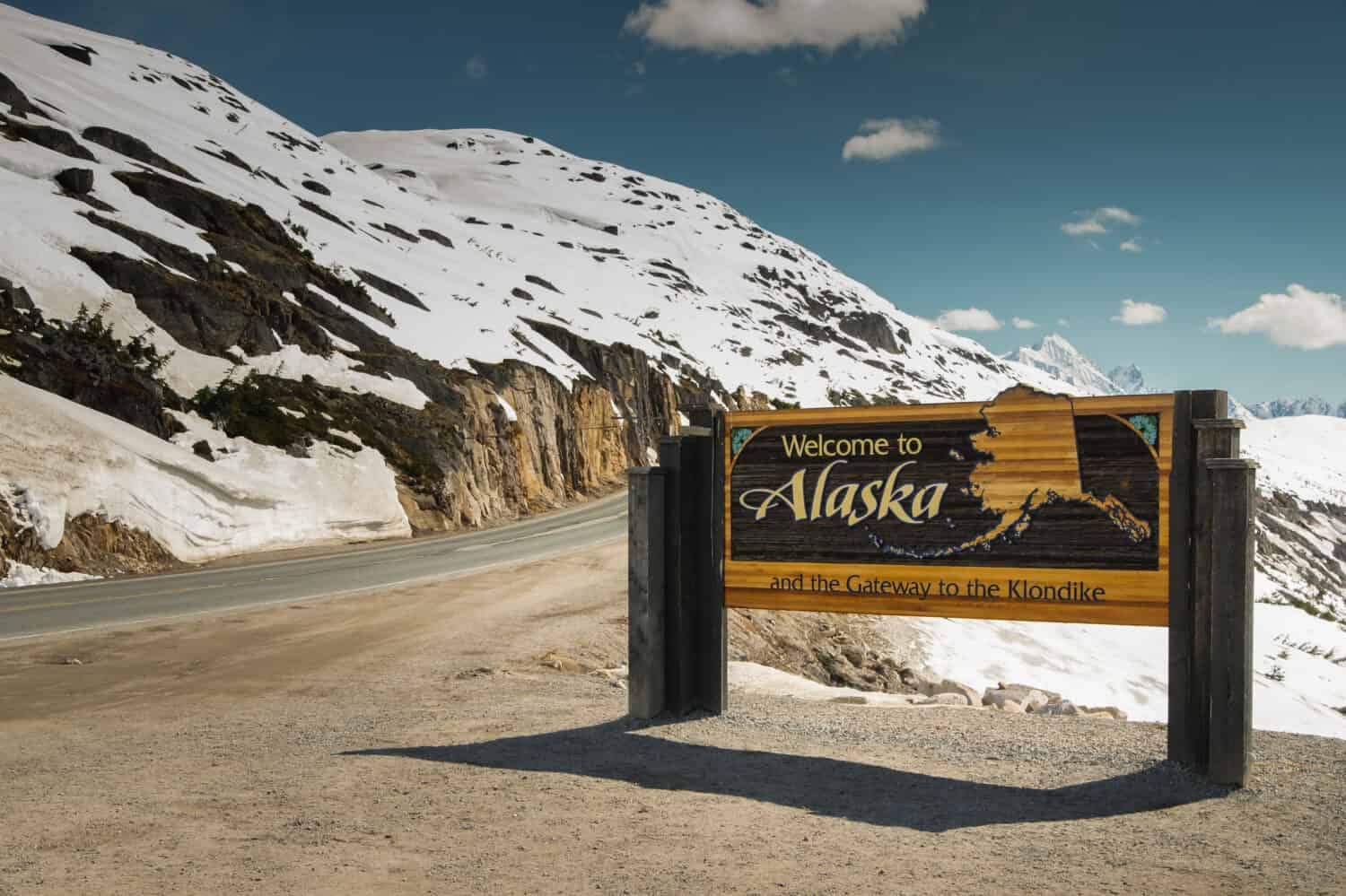
British Columbia and Yukon, two Canadian provinces, share their western borders with Alaska.
©Benjamin Suda/Shutterstock.com
Alaska shares its only land border with Canada. Specifically, it borders two Canadian provinces, Yukon and British Columbia.
The state’s most extensive land border is with Yukon. The border extends for approximately 1,538 miles (2,475 kilometers) through diverse landscapes. Being so far north, the border between Yukon and Alaska is remote and has a sparse population.
Alaska’s border extends to northern British Columbia for approximately 710 miles (1,143 kilometers). This includes Alaska’s Panhandle region and its 1,000 and more islands.
This border is vital in trade and tourism between Canada and the United States. Because Alaska is split from the rest of the United States, the state and its inhabitants have cultural and economic connections to Yukon and British Columbia.
Bodies of Water
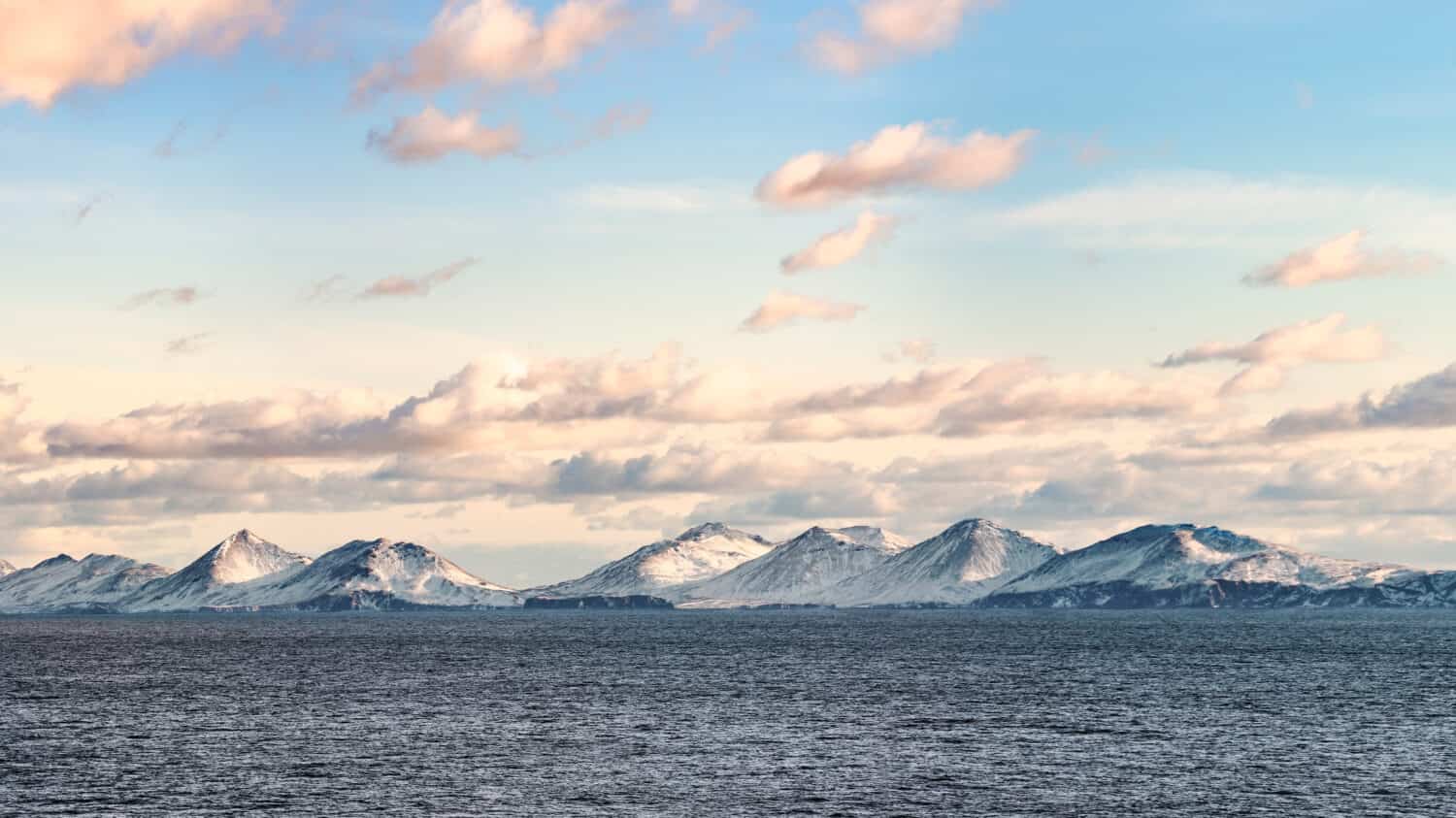
Alaska has 33,904 miles (54,563 kilometers) of coastline. It represents approximately 35% of the U.S. coastline.
©nektofadeev/Shutterstock.com
Alaska shares a border with Canada, but most of its land is surrounded by different bodies of water, which shaped the state’s geography. But they are also essential for its climate, ecosystems, and economic activities.
Bering Sea and Bering Strait
First, the Bering Sea is to the west of Alaska. This body of water separates Alaska from Russia and North America from Asia. This area is famous for its rich marine life and is essential for the fishing industry. It is home to many species, including salmon, crab, pollock, and others.
It is also where Russian explorer Vitus Bering crossed from Asia to North America in 1741. He is believed to be the first European to have discovered Alaska.
The Bering Sea is home to the Bering Strait. This is the narrowest passage between the western tip of Alaska at Cape Prince of Wales and the southern point of Cape Dezhnever in Russia. The distance between both lands is approximately 55 miles (88.5 kilometers)!
But this is actually not the closest place between the two countries (and continents!). In the middle of the Bering Strait are the Diomede Islands. Little Diomede, the smallest, is owned by the United States, whereas Russia owns Big Diomede. These two islands are 2.4 miles (3.8 kilometers apart) and have a 21-hour time difference! In the winter, when ice covers the Bering Sea, walking between North America, Asia, the United States, and Russia becomes possible. However, it is totally forbidden for inhabitants and visitors to do so.
Chukchi Sea
North of Alaska, beyond the Bering Strait, lies the Chukchi Sea. This Arctic Ocean basin is known for its frigid waters turning into ice during winter. It is home to diverse marine life, including whales, seals, and polar bears. Due to changing climate patterns, the area is becoming of interest for shipping traffic.
Arctic Ocean
The Arctic Ocean, the smallest of the world’s oceans, borders Alaska’s northern coastline. Like the Chukchi Sea, it has harsh cold waters and icy conditions. Most of the ocean’s surface is covered by ice throughout the year. It is a vital part of the world climate system and supports unique ecosystems adapted to extreme cold.
Pacific Ocean
Last but not least, Alaska’s southern and southwestern coasts face the Pacific Ocean, the largest and deepest of Earth’s oceans. This coastline includes the famous Inside Passage, a scenic coastal route with numerous bays, islands, and fjords. Like the other bodies of water, the Pacific Ocean influences Alaska’s climate. It also provides access to marine resources and trade routes.
Is Alaska a Good Place to Live?
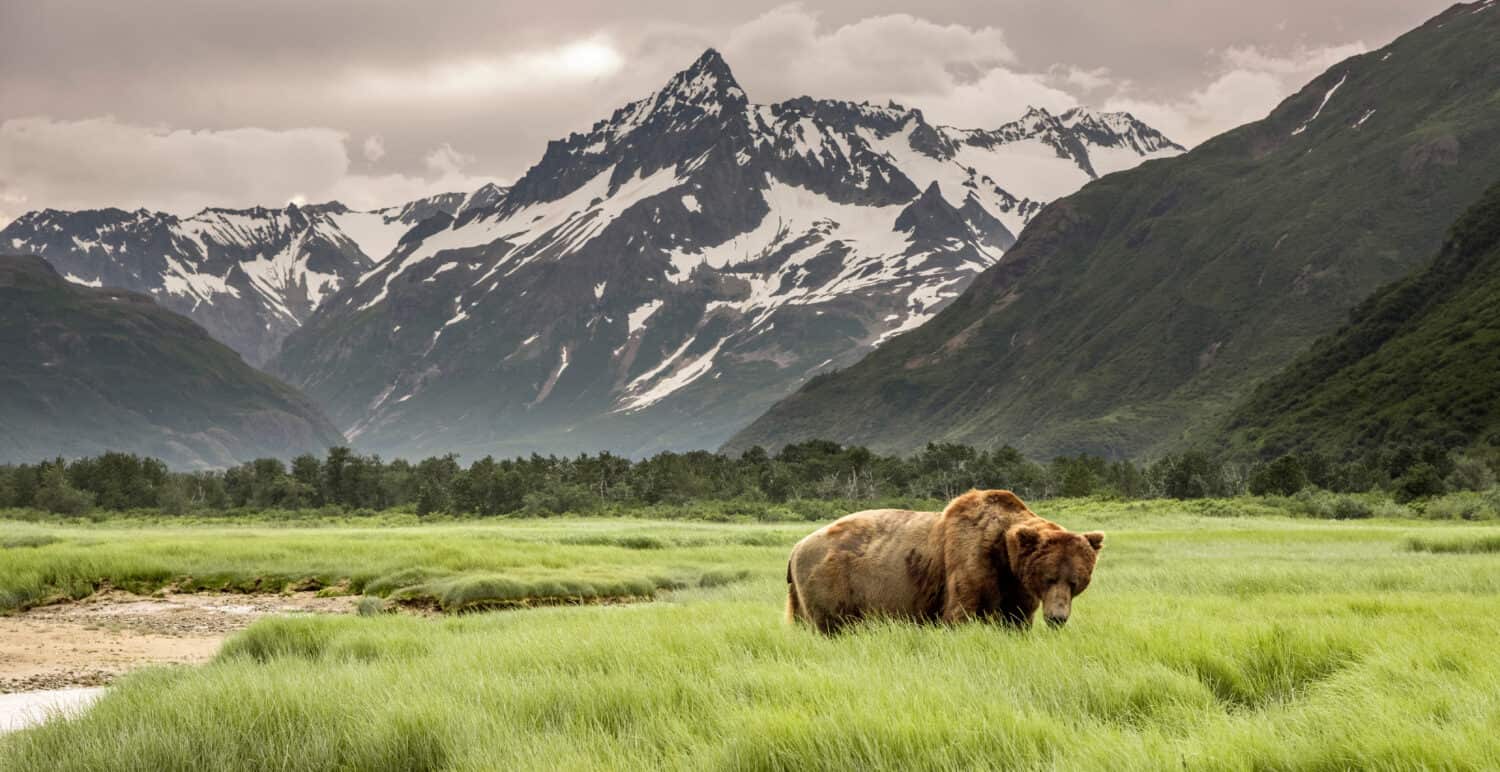
Alaska is a haven for outdoors enthusiasts.
©Robert Frashure/Shutterstock.com
If you like living surrounded by wilderness, stunning landscapes, and access to the ocean, then Alaska is the perfect place for you. But remember, you better support extreme cold and long winters too!
Natural Beauty and Outdoor Activities
One thing Alaska doesn’t lack is natural beauty. The state has some of the most beautiful landscapes, remote wilderness, and incredible wildlife. If you thrive on outdoor adventures, then Alaska will be your paradise. Residents have easy access to almost every outdoor activity, from hiking, fishing, hunting, mountain biking, skiing, and snowboarding.
Sense of Adventure
Living in Alaska is not for everyone. It often requires a lot of independence, a sense of adventure, and self-sufficiency. If the state has large cities like Anchorage, most of its terrain is remote and rugged, meaning it is not always accessible. Weather conditions are cold and sometimes can be challenging. However, Alaska offers a unique lifestyle that no other U.S. state can match.
Strong Sense of Community
Because Alaska is so far north, in a remote location, and split from the contiguous United States, it has a tight-knit community. Many community events are organized, and a lot of help goes around, especially during the winter. This is especially true for smaller villages in Alaska, where inhabitants can suffer from harsh winters and isolation. Towns foster a small-town atmosphere with a sense of belonging and camaraderie.
Economic Opportunities
Alaska’s economy is diverse. Its industries range from oil and gas to tourism, fishing, healthcare, and defense. If you have skills in these sectors, then the state’s unique economic opportunities can be attractive. In Alaska, the cost of living, including housing and transportation, can be high, reinforcing the need for a good-income job.
But Alaska also offers some less-known advantages. Alaska’s Permanent Fund Dividend program gives residents a share of the state’s oil wealth, which can help compensate for the higher cost of living.
What Is the Climate in Alaska?

The coldest temperature ever recorded in Alaska was in 1971, with -79.8°F (-79.8°C).
©TripWalkers/Shutterstock.com
As you probably already guessed, Alaska’s climate is frigid, icy, and snowy. But, due to its extensive size, it undergoes some variations in certain regions. The state experiences a wide range of extreme temperatures and weather patterns.
The climate is described as maritime or oceanic in the southern coastal regions of Alaska, near the large cities of Anchorage and Juneau. Winters are mild, with temperatures often around freezing or slightly below due to the moderating influence of the Pacific Ocean. Summers are cool with warmer temperatures, in the 60s to 70s °F (15 to 25°C). The southern coast is lush with many green landscapes thanks to a yearly considerable amount of rainfall.
In the inland and northern regions, the climate switches to subarctic or even arctic. Winters in these regions are long, harsh, and extremely cold. Temperatures often drop well below freezing and occasionally plunge to -40°F (-40°C) or lower. Plus, the daylight hours in the winter are very short, contributing to a colder climate. On the other hand, summers are short and warm. Temperatures occasionally reach the 70s or 80s °F (20 to 30°C). In the inland and northern regions, the rainfall significantly decreases, leading to more arid landscapes.
Alaska’s mountain ranges, such as the Alaska Range and the Coast Mountains, locally influence the regional climate. Rain shadows happen on the leeward sides of these mountains, leading to drier conditions on the windward sides.
What Is Alaska Most Known For?
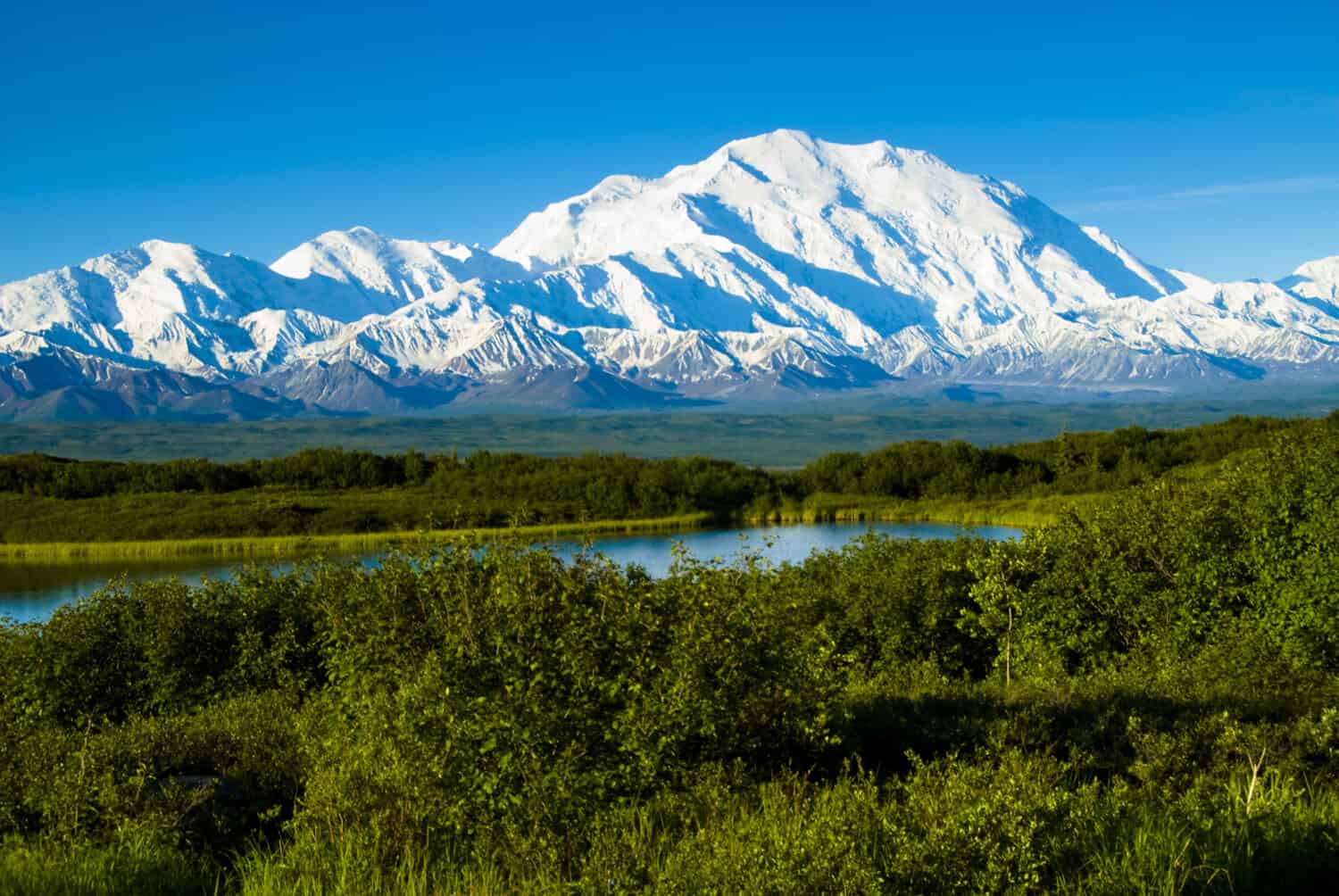
In south-central Alaska, Denali is North America’s tallest mountain, with a peak of 20,310 feet (6,190 meters).
©bcampbell65/Shutterstock.com
Alaska is famous for its stunning landscapes, remote wilderness, and incredible wildlife. The state’s breathtaking landscapes attract visitors from around the globe. Its towering mountain ranges are one hallmark of its landscapes. The majestic Denali, also known as Mount McKinley, stands as North America’s highest peak. The Alaska Range and the Coast Mountains are also stunning mountain ranges to discover.
Additionally, Alaska is home to 16 national parks, eight very famous. They are unique and home to glaciers, pristine rivers, and untouched wilderness. These include the Denali, Gates of the Arctic, Glacier Bay, Katmai, Kenai, and much more.
Watching its incredible wildlife is one of the best activities to do in these parks. Alaska is one of the best places in the United States to observe iconic species like grizzly bears and orcas. But it is also home to bald eagles, moose, and salmon populating its pristine habitats. Wildlife enthusiasts will have many opportunities to witness these creatures in their natural habitats. Have you ever dreamed of watching bears fishing for salmon? Head to Alaska!
Alaska is frigid and icy, making it an ideal adventure destination. Residents can enjoy skiing, mountain biking, fishing, hunting, and hiking in the summer. Visitors should try dog sledding, an iconic activity also used as a transportation mode in Alaska. Due to its northern and unique geographical location, residents and visitors can admire extraordinary experiences such as the Northern Lights. This stunning natural light display is only visible in the winter months.
History and Culture
Alaska has a rich history with native tribes. Today, the Inupiat, Yupik, and Athabaskan people still contribute to its cultural diversity. Alaska is home to about 13,500 Inupiat, 34,000 Yupik, and 16,000 Athabaskans.
Visitors can better understand the state’s history and the connection between Alaska Natives and their land by exploring indigenous art, traditions, and heritage.
Lastly, Alaska is also known for its role in aviation history, specifically during the Nome Gold Rush, the construction of the Alaska Highway, and the Trans-Alaska Pipeline. These helped build the state’s modern infrastructure and contributed to its economic development.
The photo featured at the top of this post is © Grey82/Shutterstock.com
Thank you for reading! Have some feedback for us? Contact the AZ Animals editorial team.







